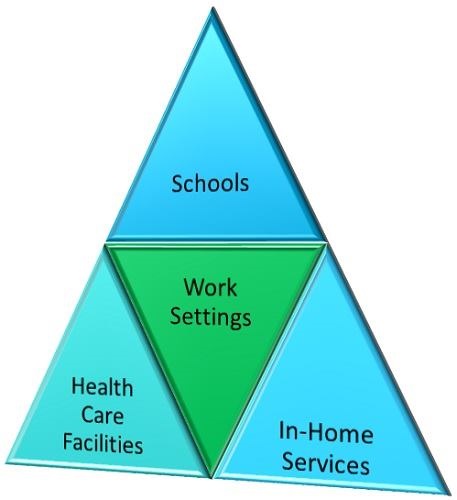Behavior is one factor that is present in every industry and area of study and practice. It’s no surprise that the environments in which behavior analysts work are diverse. Some common employment settings for certified behavior analysts include school districts, hospitals and outpatient treatment centers, living facilities and in-home treatment services, although the almost unlimited possibilities also include business entities, other organizations and even animal-training roles in zoos. Your work setting as a behavior analyst influences what your day-to-day work life is like, including the client populations you work with and your specific job duties in that position.
Behavior Analyst Jobs in Schools
Among the many employment settings available to behavior analysts, school classrooms are among the most fulfilling. Board Certified Behavior Analysts (BCBAs) employed by public school districts or private school systems work with students who demonstrate problem behavior and with the teachers who are charged with educating these students. Behavior analysts in schools perform many of the same tasks as those in other settings, such as assessing, analyzing and graphing students’ behaviors and developing strategies to modify behavior. They also work closely with special education personnel in the district, as well as the child’s parents, to develop an Individual Behavior Plan, also known as an Individual Education Plan (IEP), that addresses the student’s unique needs.
Behavior analysts working in this area of employment may work at one or several schools in a district or system. Often, school districts don’t employ as many behavior analysts as would be ideal to serve the student population, so the workload may be intense.
Behavior Analyst Jobs in Health Care Facilities
Health care is among the leading employment industries for behavior analysts. While there are several different settings in the field of healthcare, hospitals, community and private outpatient treatment centers and assisted living facilities are among the most common. Just as there are different client populations and types of employment settings, there are several different specialties within the area of behavior analyst, the Behavior Analyst Certification Board (BACB) reported.
Those who work in an assisted living facility and primarily serve an elderly patient population are likely to practice primarily in the field of behavioral gerontology. In inpatient and outpatient rehabilitation facilities, practitioners who work in the field of brain injury rehabilitation assist patients who have suffered acquired brain injuries to help improve the behavioral changes that brain trauma can cause. In clinics and treatment facilities for substance abuse disorders, behavior analysts play a part in addressing the behaviors that lead to drug use, addiction and dependency.
Although there are many possible fields of specialization in this area, the field of behavior analysis is best known for its applications to treating individuals, and especially children, with autism. As a result, many behavior analysts work in programs – inpatient or outpatient – that provide treatment and intervention services tailored to young children with autism. In these programs, behavior analysts often assess maladaptive or severe problem behaviors, using evidence-based methods of intervention that often revolve around the concept of using rewards of some nature to reinforce desired behaviors.
In addition to treating autism, behavior analysts also provide interventions that can reduce problem behavior and improve communication abilities and quality of life for people with other developmental disabilities, including Downs syndrome, the BACB reported.
IMAGE SOURCE: Pixabay, public domain
In-Home Intervention Services
For clients whose need for services is severe, it might not be easy, practical or plausible for caregivers to take them to outpatient facilities for treatment, yet they may not have such severe medical needs that they require ongoing inpatient care in a facility. To address this gap, behavior analysts often provide in-home services.
In these positions, behavior analysts perform many of the same job duties, including administering and interpreting the results from behavior assessments to create an intervention plan, but rather than remaining in the same office or healthcare facility work setting all day, they drive to clients’ homes to conduct their work. Some behavior analysts love this change of scenery that makes each day a little different, while others prefer the regularity of a typical schedule that doesn’t require constant commuting throughout the day.
Although precise job duties can vary from one employer to another, it’s not unusual for behavior analysts who provide in-home services to devote more of their efforts to training families and caregivers on using the interventions compared to those in outpatient centers.
Additional Resources
What Populations Does a Behavior Analyst Work With?
What Kind of Fields Can Use a Behavior Analyst?
Are There Jobs in the Field of Business for Behavioral Analysts?


